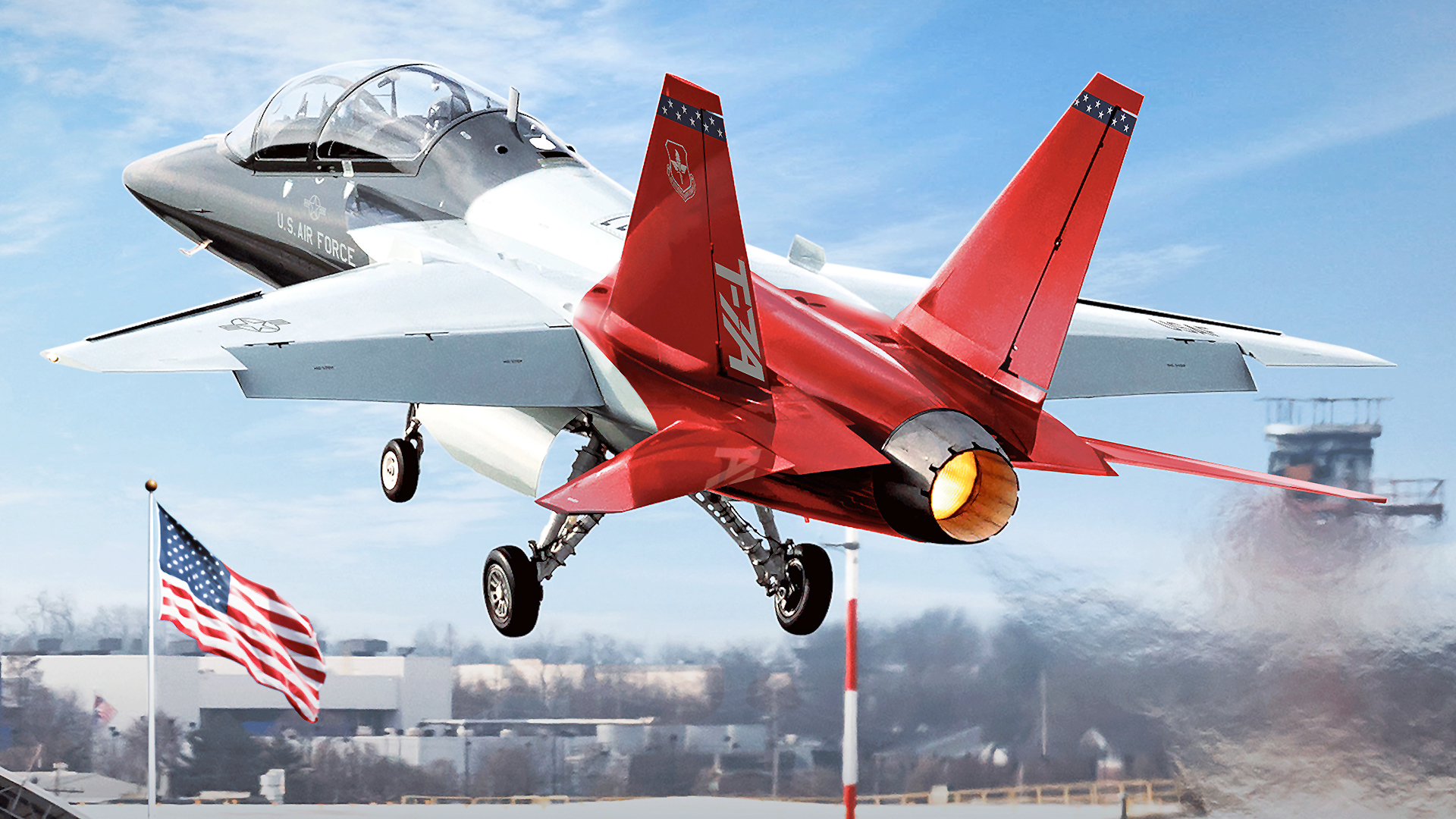When U.S. Air Force Vice Chief of Staff Gen. David W. Allvin appeared before the House Armed Services readiness subcommittee in mid April, he had troubling news regarding the service’s continuing pilot shortage.
In response to a question from committee member Rep. Jennifer Kiggans (R-VA), asking how long it takes to train Air Force fighter, bomber and mobility pilots, Allvin testified that training for mobility pilots should take 18 months while fighter and bomber pilot training could take more than two years.
But he explained that it’s actually taking the Air Force up to four years to train new pilots because the service doesn’t have enough training aircraft available.
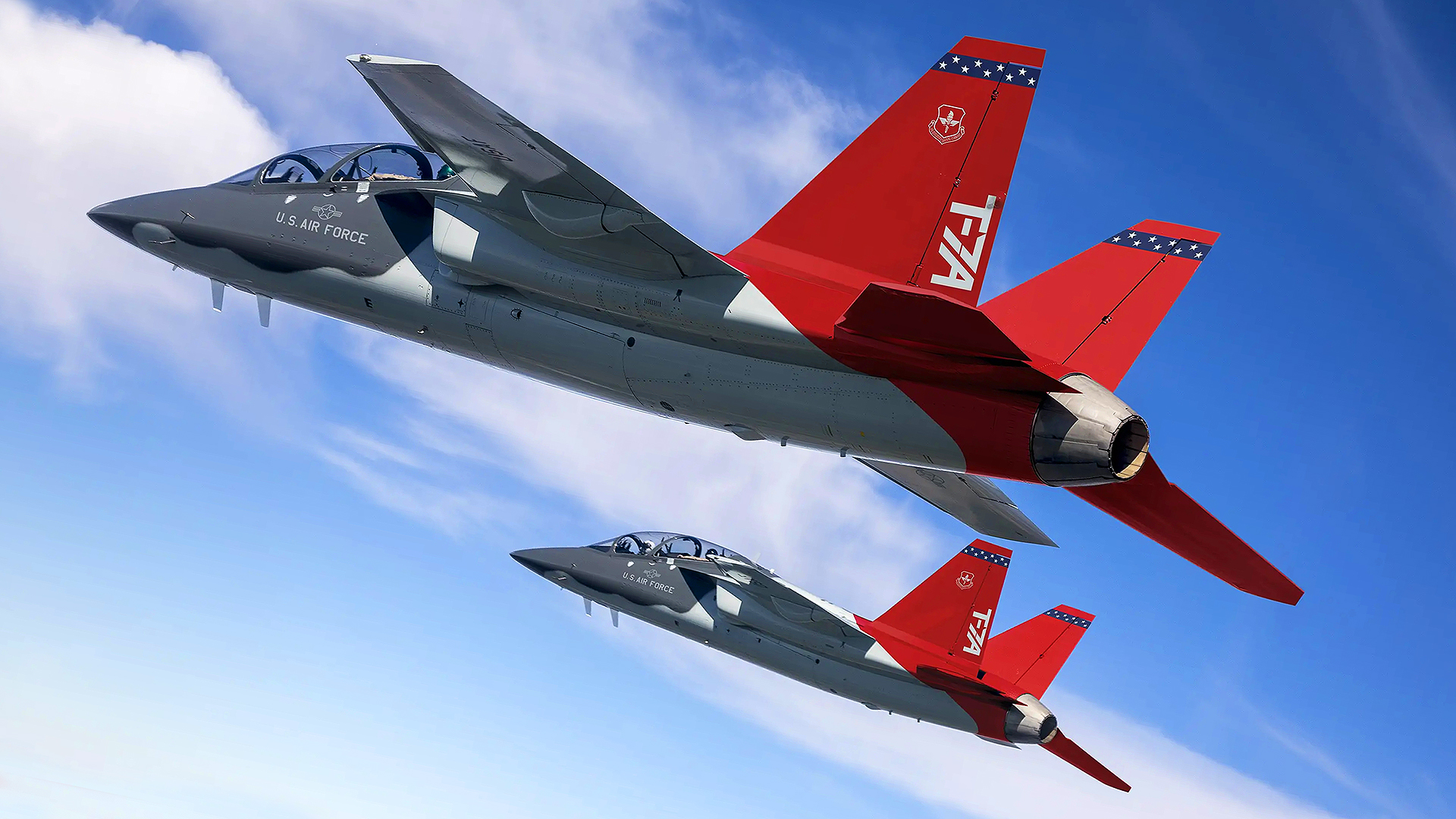
“From the time they are commissioned – because of the challenges we’re having with T-6 and T-38 – we have a little bit of a backup. It can be as many as four years,” Allvin said. “So almost an 18 month to 24 month-wait just to get into pilot training.”
A week later, Andrew Hunter, the assistant secretary of the Air Force for Acquisition, Technology and Logistics, issued a statement announcing that Boeing’s T-7A Red Hawk, the advanced jet trainer selected in 2018 to replace the service’s aging T-38C Talon, would not enter into service until 2027 – three years later than originally planned.
“Due to issues discovered in the early development and test phase of the program, the Air Force is delaying its Milestone C decision to initiate the buy of T-7A production aircraft. By extension. this will shift the T-7A program’s initial operational capability (IOC) into the Spring of 2027. We are pursuing risk reduction activities to mitigate some of these schedule challenges.”
That’s almost 11 years after the Red Hawk prototype’s first flight in September 2016.
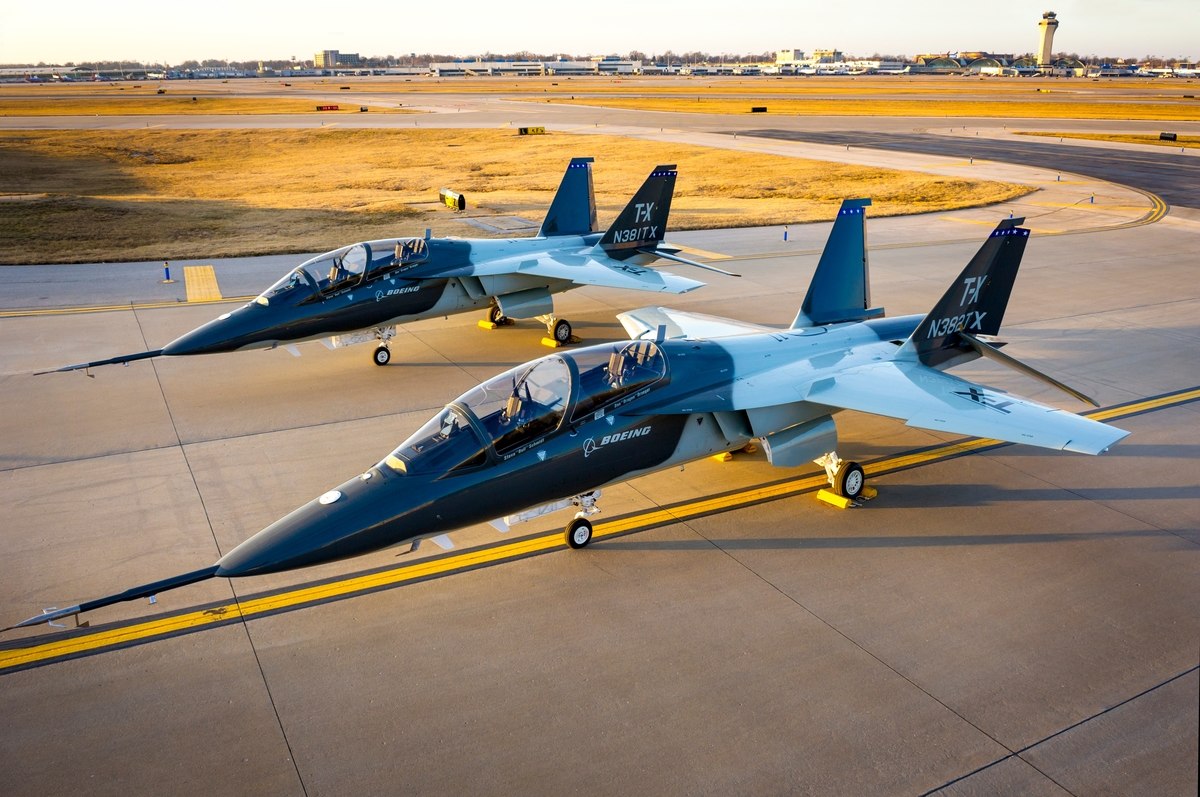
Advertised by the Air Force and Boeing as the service’s first “digitally designed and engineered” aircraft, T-7A was lauded as a poster child for developmental speed.
The Red Hawk was expected to begin a new era in rapid design and engineering with iterative development carried out in the virtual world via modeling and simulation without having to bend metal or conduct extensive real-world testing. Systems integration would be accelerated and the time from the first flight to production significantly compressed.
It hasn’t worked out that way.

Not enough pilots, not enough training aircraft
Written testimony was also part of Gen. Allvin’s mid April appearance on Capitol Hill. Among the details included in it were numbers outlining the Air Force’s growing pilot deficit.
In Fiscal Year 2022, the service suffered a net loss of 250 pilots with the force ending the period 1,900 pilots below its 21,000-pilot goal. Pilot production stood at 1,276 with 105 fewer pilots earning their wings than in the 2021 Fiscal Year – 224 short of the 1,500 new pilot goal for 2022.
“In order to have a healthy pilot professional force, you need first and foremost the combat cockpits filled,” Allvin said, responding to a question about the continuing shortage from Rep. Carlos Giménez (R-FL).
He indicated that the Air Force currently has enough combat pilots, instructor pilots and test pilots. But only about 70 percent of the staff and leadership positions normally manned by experienced pilots are now filled.
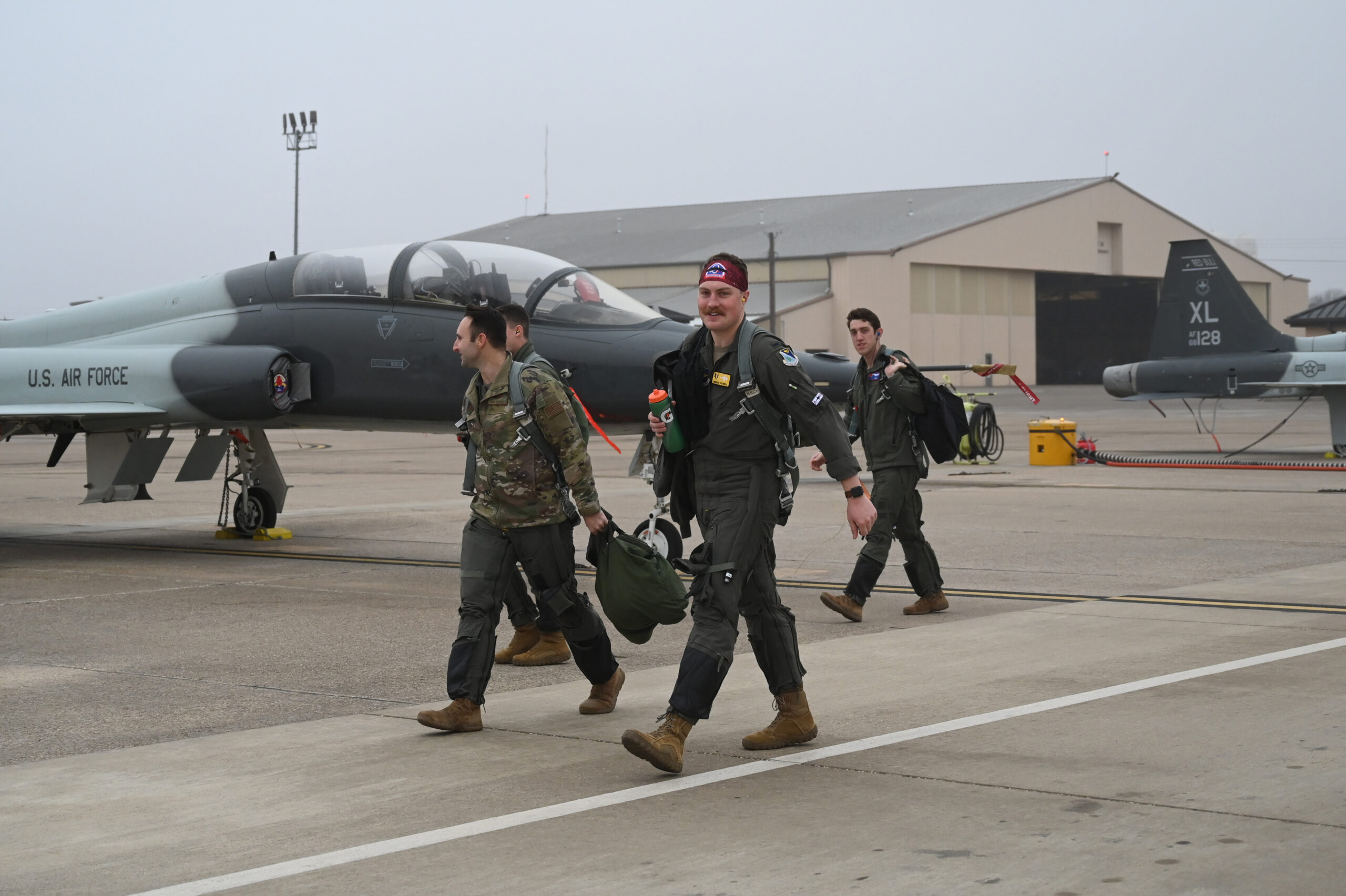
“That is where we are currently absorbing our shortage – in the staffs,” Allvin said. “If this sustains over time, then we will have a sort of misshapen force, where you won’t be able to have professionally developed enough of the rated membership to provide that expertise and leadership at the higher level.”
T-7A’s latest delay adds to the difficulties the Air Force is facing in keeping its 422 T-38C Talons flying. A string of T-38 mishaps, fatal and non-fatal have plagued the service in recent years.
In mid March, Air Force Times reported that Air Education and Training Command was falling behind in refurbishing the General Electric J85 afterburning turbojets that power the command’s trainers, keeping many Talons grounded.
Scottsdale, Arizona-based Standard Aero, awarded a $237 million contract in 2020 to provide service-extending repairs to J85s, is one of “several engine repair companies in the enterprise” according to Kyle Hultquist, the firm’s senior vice president of marketing and communications.
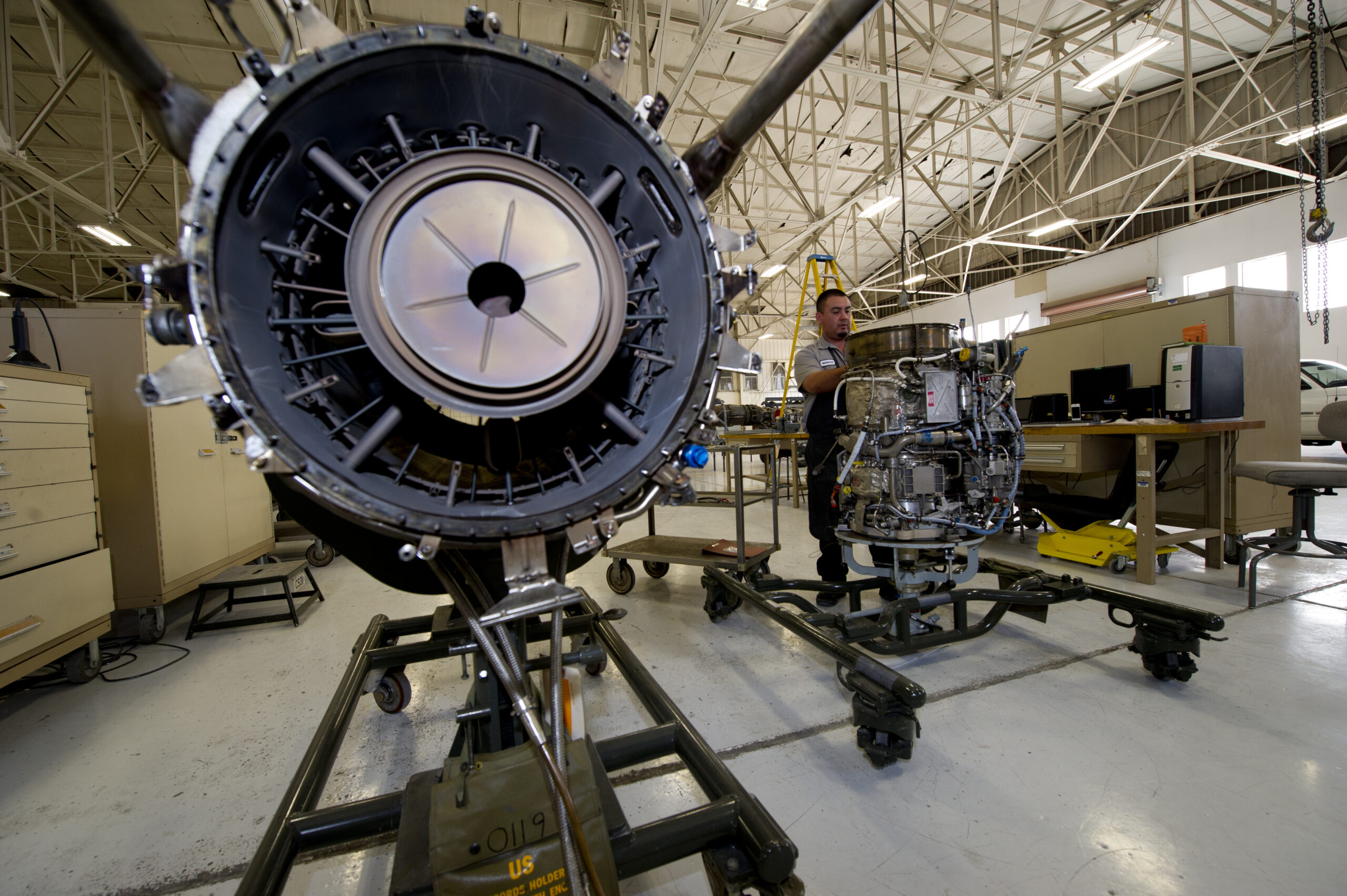
He noted that “there are several parts supply organizations involved as well, all being managed by the USAF Program Office,” and added that there were problems with some of the parts the Air Force had provided to Standard Aero, contributing to delays in returning the engines to service.
Asked how many T-38s are available for training on a daily basis, AETC command spokesperson, Capt. Lauren Woods, responded, “For operational security reasons, we do not release the number of available aircraft for daily training operations.”
She also said it’s “impossible” to know how the production of pilots has been affected by the shortage of T-38s for training.
The accountability factor
No individual from the Air Force, Boeing or Collins Aerospace would speak on the record about the T-7A delays. When presented with questions, they funneled written responses through a spokesperson or a public affairs officer.
We reached out to the T-7A program, as well as the Air Vehicle Branch chief for the T-7 Red Hawk Division of the Air Force Life Cycle Management Center’s Mobility and Training Aircraft Directorate, but weren’t able to speak with officials.
Similarly, we asked to speak with AETC commander, Lt. Gen. Brian Robinson, about how delays with T-7 and problems keeping T-38s flying were affecting the command’s mission. AETC would only respond via Captain Woods.
Startlingly, responses we received from Woods on April 21, just a few days after Gen. Allvin’s testimony and the same day the Air Force announced that T-7 would not begin operations until 2027, included the following statement – “T-7A delivery delays will not slow the production of AETC pilot graduates. However, it will force the use of the venerable T-38C longer than planned.”
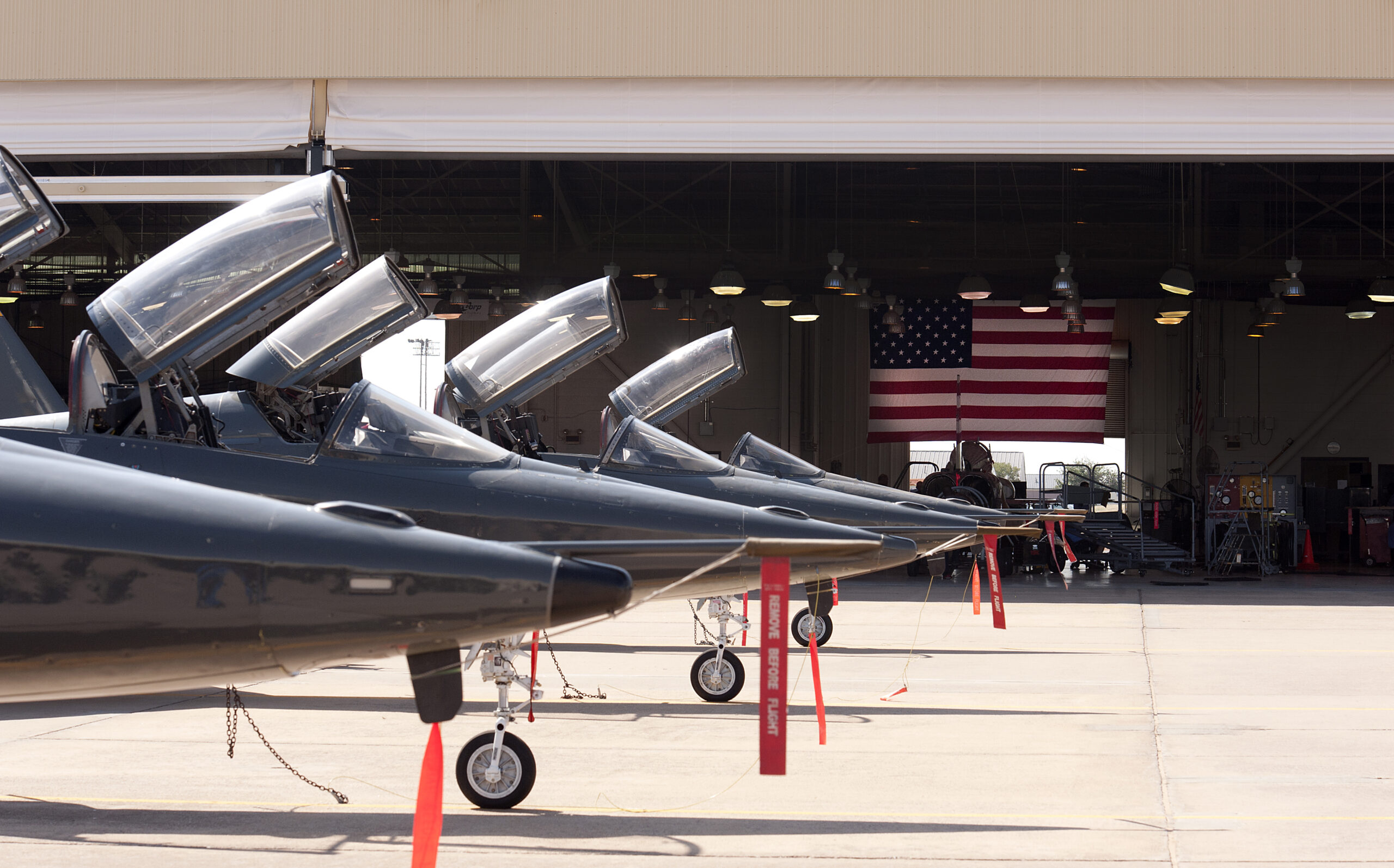
Completely at odds with Allvin’s comments and the newly announced delay, AETC’s assertion didn’t make any sense. So we followed up again and on April 27 the command said:
“We anticipate pilot production shortfalls to continue through this fiscal year. The Air Force is continuing sustainment and modernization investments in the T-38C and T-6 fleets, until T-7A deliveries are complete at pilot training locations.”
With multiple delays already – Boeing was to have delivered the first five production T-7s to the Air Force this year but now won’t deliver aircraft until December 2025 at the earliest – and ongoing maintenance issues for T-38s, it seems likely that pilot production shortfalls will extend beyond fiscal 2023.
AETC seemed to acknowledge this with the statement:
“Any future T-7A delays will be buffered with the T-38C. Naturally, further delay of the T-7A requires a greater percentage of the T-38C fleet to undergo an increased intensive repair and inspection cycle as well as component replacements to support AETC pilot training until T-7A procurement.”
A warning from digital transformation’s leading advocate
To his credit, Dr. Will Roper, the man who preceded Andrew Hunter as assistant secretary of the Air Force for Acquisition, Technology and Logistics, was willing to speak on the record.
Roper, who described himself as “shaping and in a way leading digital transformation” during his Air Force tenure is now the CEO of Istari, a company that emerged from “stealth mode” in February. Backed by former Google chief executive officer Eric Schmidt, the technology startup is dedicated to revolutionizing the field of digital engineering and promoting a transition to “Industry 4.0.”
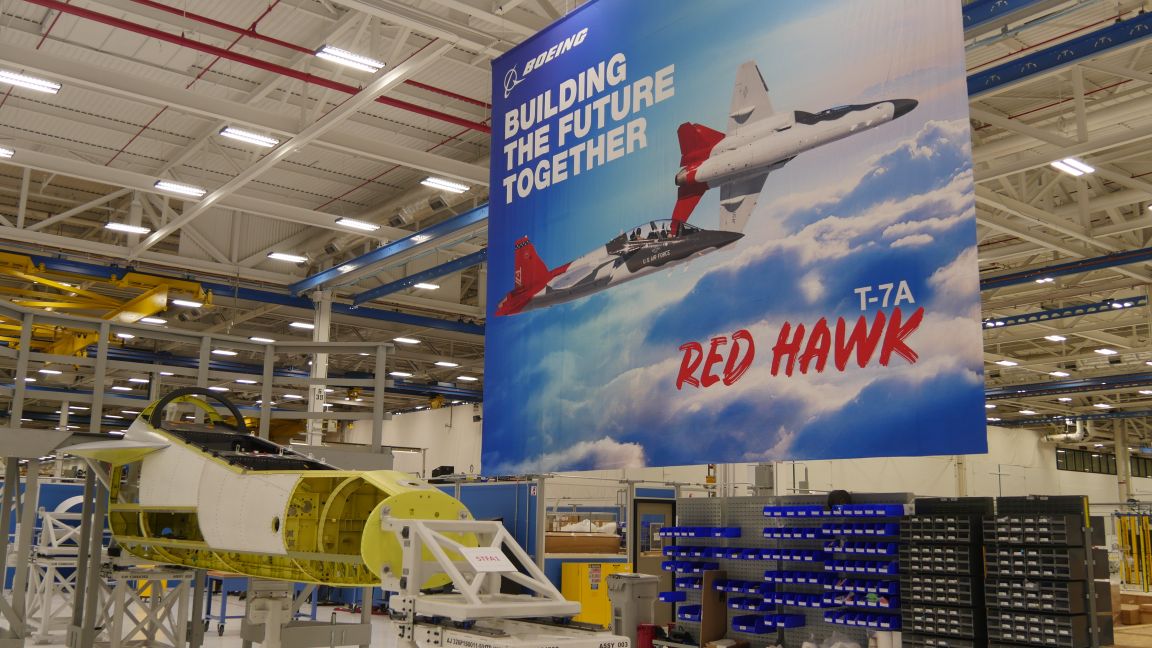
It’s a concept Roper has championed, presaging “an end to mass production for many types of systems because you can afford to keep designing, improving and upgrading,” he said.
That was the idea behind his “Digital Century Series”, military aircraft that could be swiftly and continuously upgraded, echoing the series of fighter aircraft that were developed in rapid succession in the 1950s, from the North American F-100 to the Convair F-106.
Secure digital engineering is the key, he maintains.
“Software ate the world, and now hardware can too via the magic of collaborative models. We can design things, test things – in general, learn things – faster, cheaper, and greener than the physical universe allows.”
But the Pentagon and the Washington establishment decided decades ago that mass production for military aircraft was the way to go, Roper opined, leading to consolidation as defense primes “merged around that concept” and a demand cycle that only launched new acquisition programs once every 30 years.
“We just successfully built a bomber at a critical time,” he notes, referring to the B-21. “When will the next bomber be built? Probably 30 years from now.”
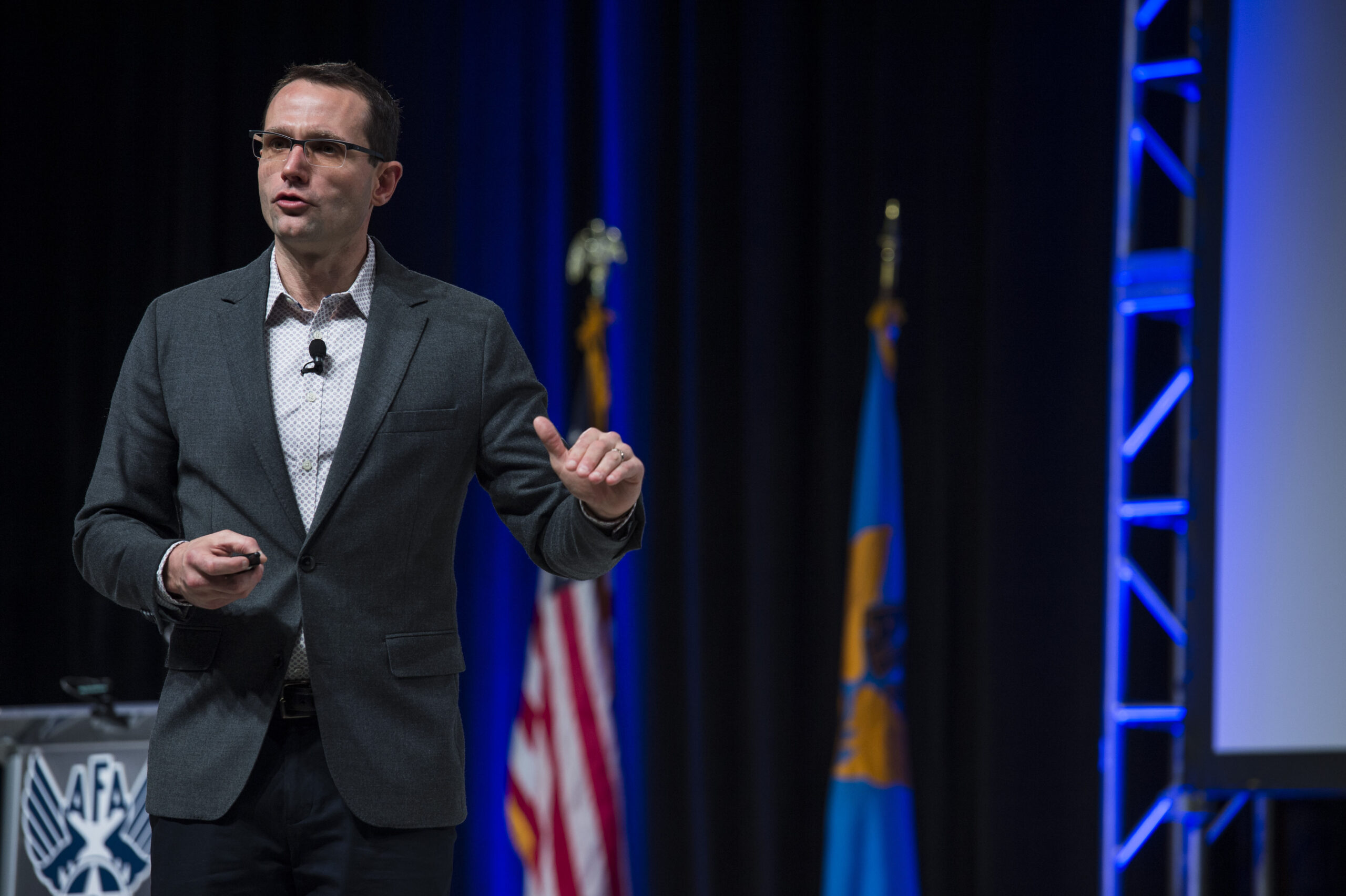
It’s a paradigm the Department of Defense must break, Roper says, adding that the U.S. military is in danger of declining precipitously.
“This is the choice for the Pentagon and I would argue it doesn’t have a lot longer to decide because we’re close to critical collapse in many areas, tactical aviation being one.”
“Contractor inability to rapidly correct deficiencies”
That phrase stands out in the Air Force’s response to a question we asked about the design/system integration issues causing the biggest headaches for Boeing and the Air Force.
Problems for the trainer that have been widely reported include wing-rock at high angles of attack (a challenge Boeing said is now “resolved”) and the inability of T-7A’s escape system – the ACES 5 ejection seats made by Collins Aerospace – to enable safe ejection for a wide range of aircrew body types, particularly smaller, lighter female pilots.
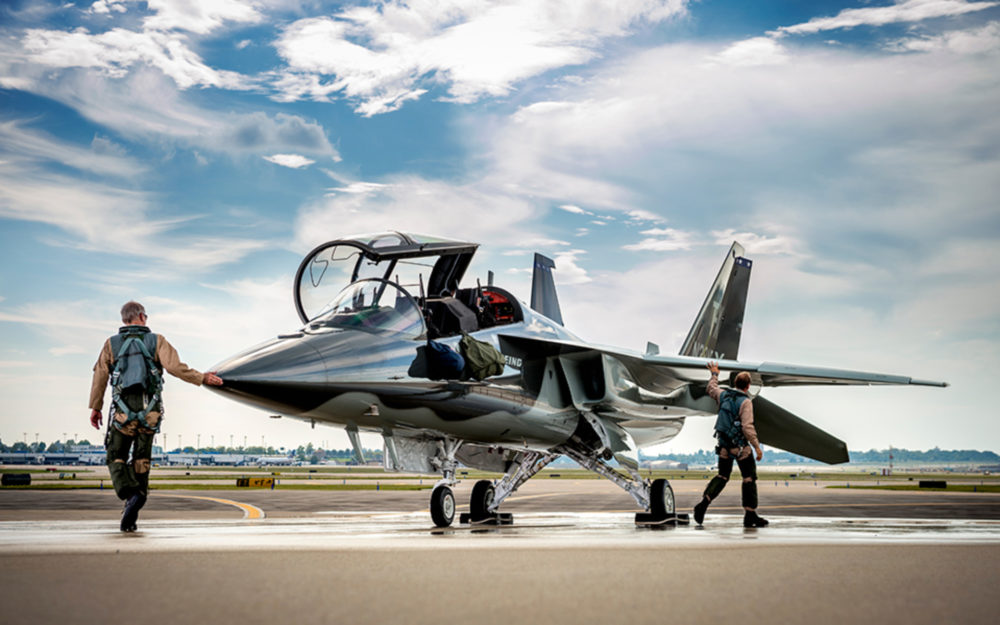
According to the Air Force, tests with the ACES 5 ejection seats showed them exhibiting unsafe deceleration at parachute opening, potentially causing pilots to suffer concussions as their visors tore off.
Collins Aerospace declined an interview on the nature of the problems with the ACES-5 seats, stating that its “ejection seats are designed to accommodate a crewmember from 103 lbs. to 245 lbs. We defer you to Boeing and the USAF for other comment.”
In the April announcement of delayed IOC for T-7A, Andrew Hunter said the Air Force and Boeing team completed a sled test in February 2023 and that they are on track to conduct the first taxi test within the next several weeks.
The tests “posture the T-7 program to resolve issues with the escape system and move forward to deliver the training capability the Air Force requires,” he stated.
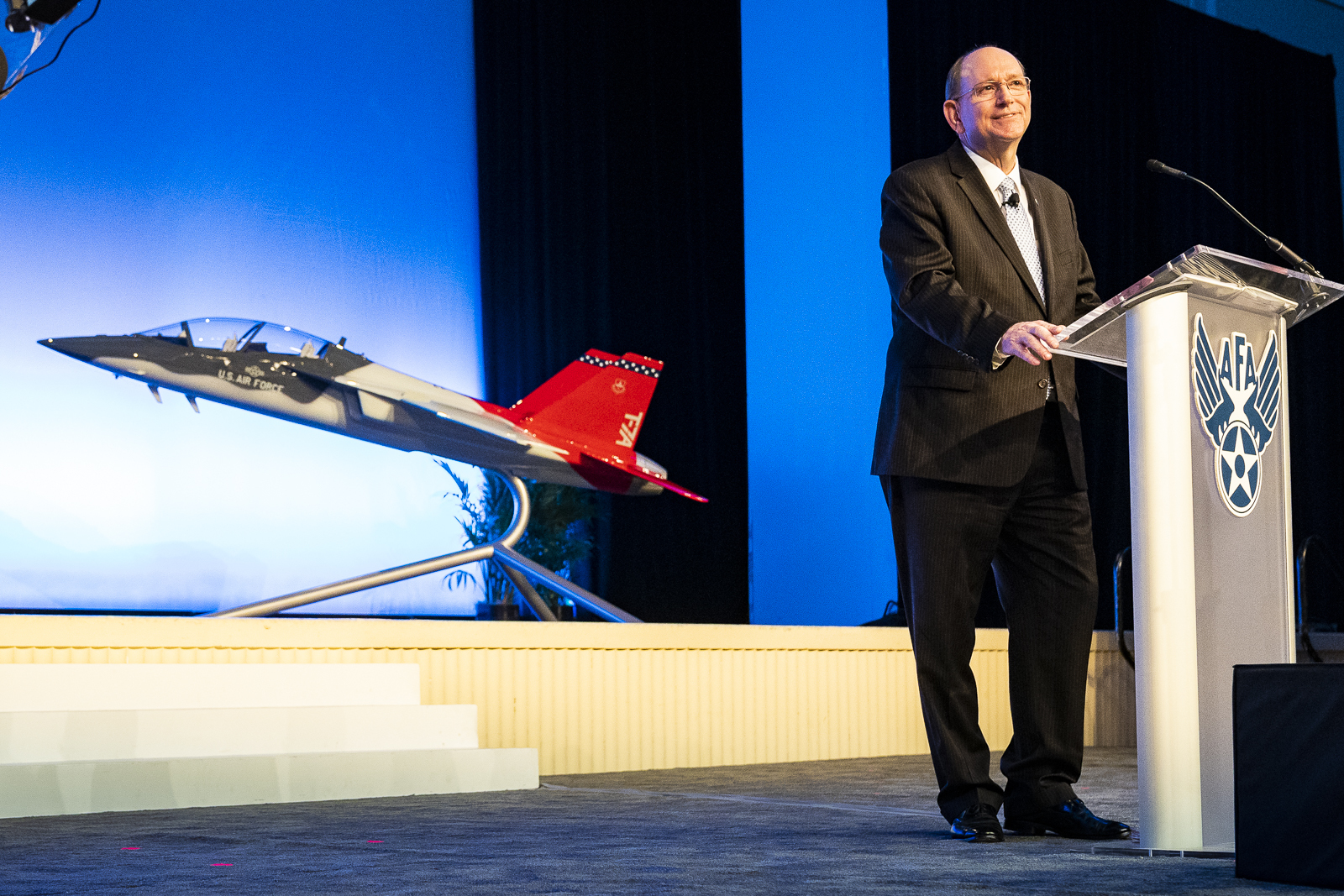
Solving the escape system problem has been one of the prime hurdles to the commencement of flight testing. The Air Force said flight test using Boeing’s production relevant jets – two of the five jets the company is building for the trainer’s engineering, manufacturing and development phase – will begin in September.
Asked about reporting in an Air & Space Forces Magazine article on April 14 that stated, “Industry sources suggest, however, that USAF’s crash dummies were improperly instrumented, suggesting inaccurate results”, Boeing responded, “We defer to the Air Force.”
Collins Aerospace said, “For specifics on manikin instrumentation used in T-7A testing, please contact the USAF directly.”
Putting the same question to Major Alexandra Stormer, the source of most of the Air Force’s statements regarding the Red Hawk produced no response.
But another of the statements Stormer released suggested there are more problems for the T-7A than have been reported, including three “aerodynamic instability discoveries.”
“In June 2022, the T-7A Red Hawk program, in conjunction with Boeing, began a schedule re-baseline effort to assess the collective impacts of all schedule delays to date, to include in ground, pre-flight testing and hardware qualification challenges; contractor inability to rapidly correct deficiencies; subcontractor initial design delays; three aerodynamic instability discoveries; escape system qualification delays; and supplier critical parts shortages.”
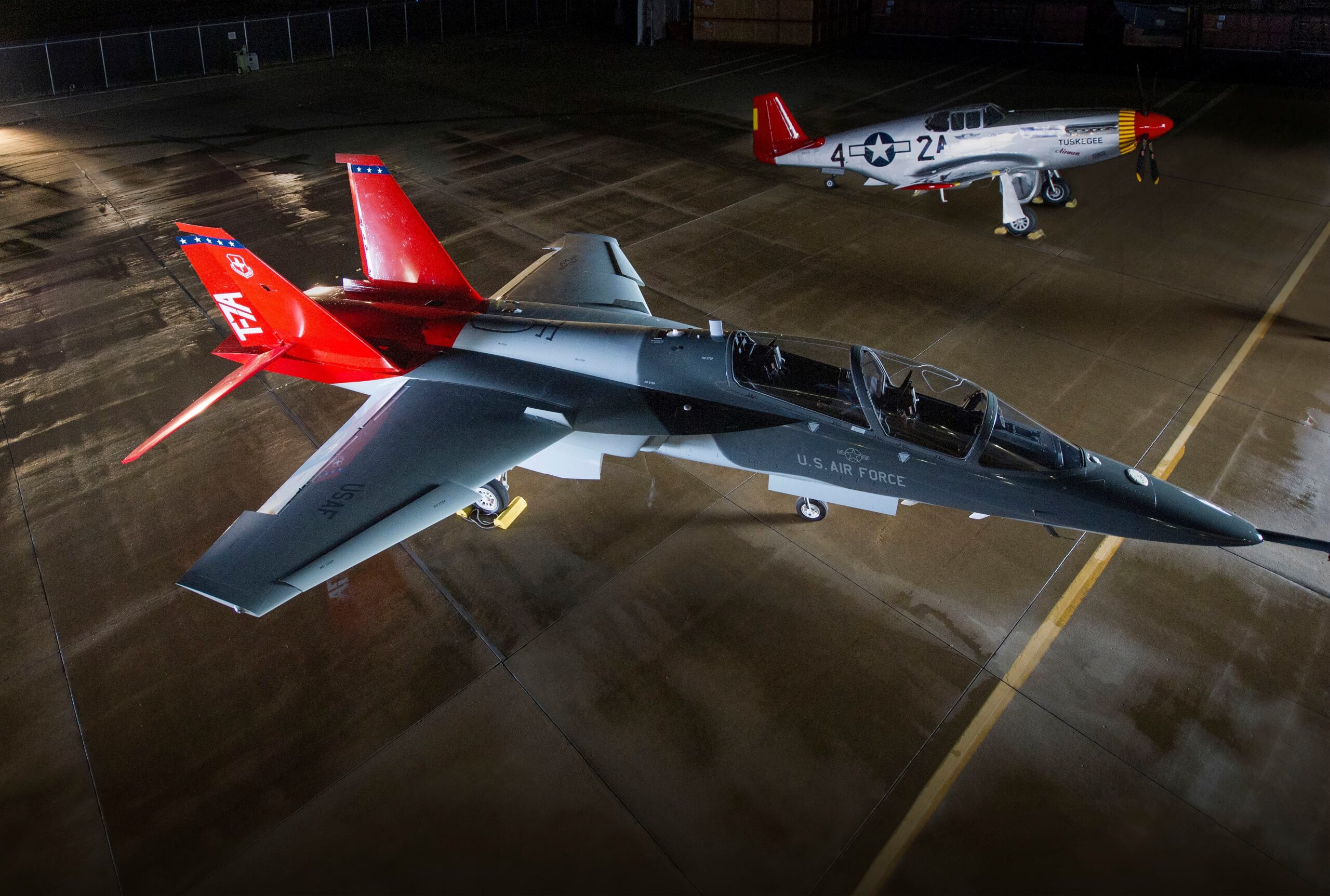
Boeing told us that its findings during hardware/software integration have been resolved and that ground testing delays are associated with the escape system. The company had nothing more to provide on subcontractor initial design delays and offered no explanation for the three aerodynamic instability discoveries the Air Force reported.
On the Air Force’s assertion of “contractor inability to rapidly correct deficiencies” – a hallmark capability for digital engineering/design – Boeing said, “We have worked with the U.S. Air Force to better understand their perception and are taking the necessary steps to address the issues.”
Perception or reality, the problems Boeing is having in getting to production with the Red Hawk are a reminder that no technological process is perfect – including digital engineering/design.
Analog vs. digital engineering
The aircraft the T-7A will replace has been in service since 1961. More than 1,180 Northrop T-38s have been built to serve the USAF, NASA, the U.S. Navy and five foreign air forces. Now 62 years into its career, it appears the supersonic trainer will have to soldier on into the 2030s.
Northrop’s T-38 design team had none of the modern, digital tools available to the Boeing/Saab designers who won the USAF’s T-X competition to replace the Talon in September 2018 with total production contracted at 351 aircraft and 46 simulators.
Equipped with drafting tables and slide rules they nonetheless produced a prototype that made its first flight on April 10, 1959. By March 17, 1961, the T-38 officially entered service with the Air Force – less than two years after its first flight.
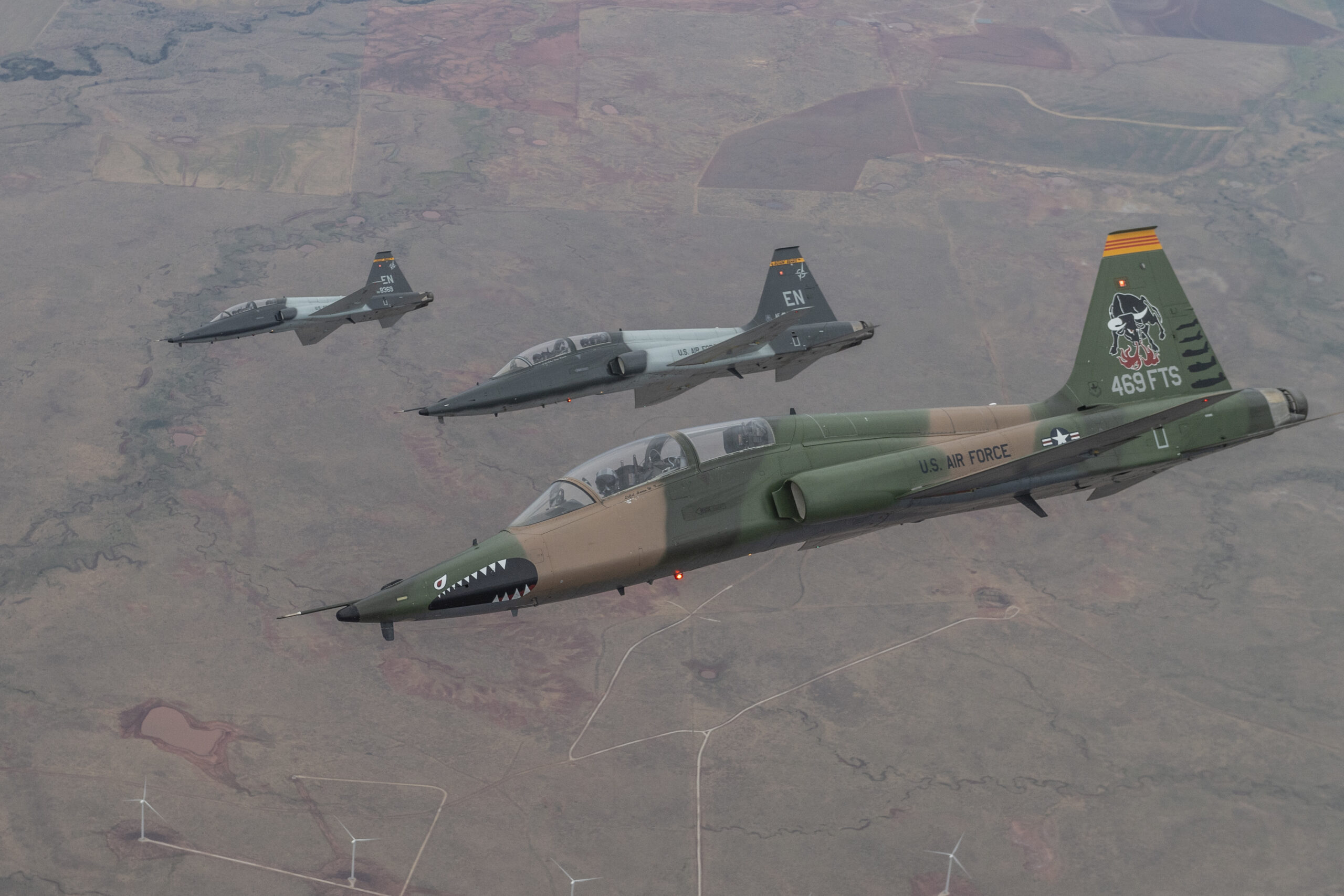
The Red Hawk beat out Leonardo’s T-100, a version of the M-346 in service since 2015 with five air forces, and Lockheed Martin/Korean Aerospace Industries’ T-50, in service since 2005 with five air forces. But almost seven years have passed since T-7 first flew and so far Boeing has lost $1.1 billion on the fixed-price contract it signed with the Air Force.
The company’s third quarter 2022 earnings report warned that “risk remains that we may record additional losses in future periods” for the T-7.
Originally estimated to be a $19.2 billion program by the Air Force, Boeing’s winning bid of $9.2 billion was a big win for the service according to Heather Wilson, who served as secretary of the Air Force at the time.
“Through competition we will save at least $10 billion on the T-X program,” she said in 2018.
“This is the only time I can think of in my 35-year career that the contract victory was accompanied by an out-of-the-box write-off,” aerospace analyst and Managing Director for Aerodynamic Advisory Richard Aboulafia quipped. “‘Yay, we won. Ok, we’ll start off by writing off half a billion dollars.’”
Aboulafia observed that Boeing signed the T-X program contract at a time when it was flush with cash from its commercial jetliner business and riding a wave of military program wins with low-bid fixed price contracts for its KC-46 aerial refueling tanker and MQ-25 unmanned carrier aircraft tanker/ISR aircraft.
“Maybe the real story is that if you’ve got a seriously underpriced and therefore under-resourced contract, no amount of digital engineering can make up for that,” he opined.
Asked whether the T-7 program has been under-resourced, Boeing produced a terse, one-word response. “No,” the firm said in a written statement.

“A funny thing happens when you move out of digits to reality,” Teal Group analyst J.J. Gertler said.
Transitioning an all-digital design to the real world hasn’t reduced the need for flight tests and certification in the T-7’s case, he noted. Modeling and simulation have the potential to speed design and overcome challenges quickly but they can also lead designers and engineers astray Gertler cautioned.
“Digital engineering has the capability to rapidly iterate but it’s only as good as the information you put into it. It may also help you get to a wrong answer faster which you then have to back out of.”
It’s a suggestion Dr. Will Roper admits is a possibility. He said he thinks T-7 set a precedent as the first program to try to go fully digital.
“But I wouldn’t hold it up as the Acme of getting everything right,” he observed. “It’s the first and it’s going to have a lot of those first-mover learning things.”
Roper said there is going to be “some discovery” about which parts of the models that underlie the Red Hawk’s design are accurate and which need additional data.
“Digital engineering isn’t going to make issues go away,” he noted. “It’s going to create a new issue which is – do you trust the underlying models and simulation upon which your performance predictions are based?”
We asked Boeing whether there might be flaws in its models for T-7.
Initially, the company replied with the same one-word answer it gave for the question of the resources dedicated to Red Hawk, “No.”
Pressed further, Boeing said, “We have and will continue to develop the fidelity of our digital models in these areas to improve predictability in the future and reduce risk.”
Improving the “fidelity” of digital models sounds an awful lot like correcting flaws.
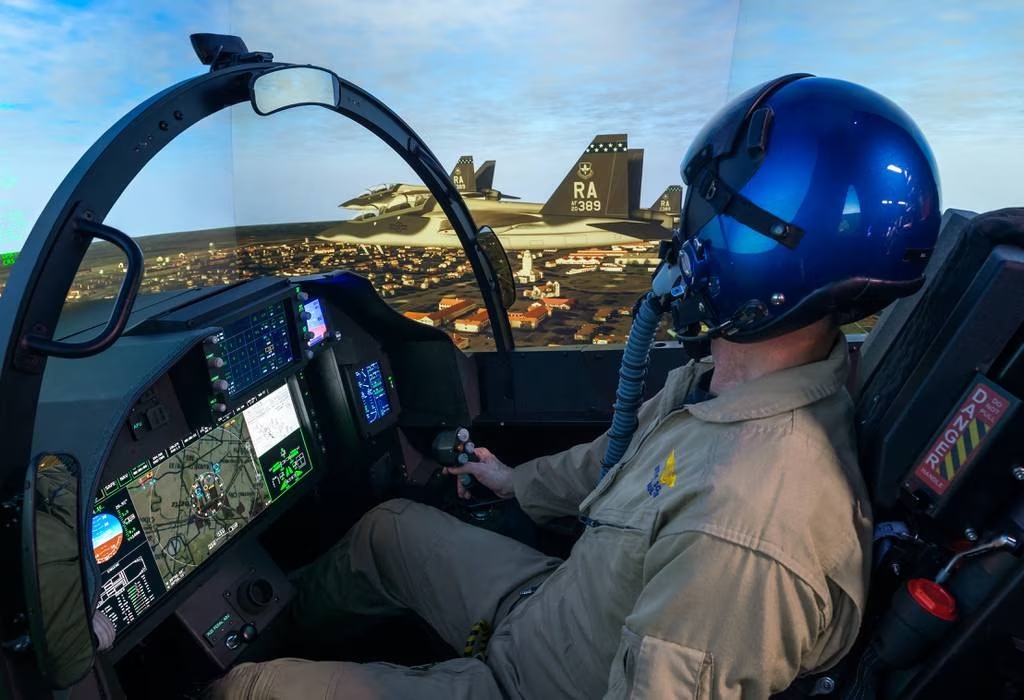
Asked about this, Boeing responded – “We are on the leading edge of modeling and simulation from an aerospace industry perspective. Continuously improving our digital model fidelity is part of our digital engineering strategy and we are investing in these areas.”
The firm added, “With that said, there is still [the] risk that discovery will occur during flight test in the non-linear areas of the envelope, such as high angle of attack flight test.”
“Digital engineering isn’t magic”
While he remains firmly committed to digital transformation and its potential, Dr. Roper acknowledged that it isn’t the cure-all for military aircraft development or acquisition.
“Digital engineering isn’t magic,” he concluded. “Just because you use it doesn’t mean that all the problems of acquisition get out of your way.”
“I’ve spoken quite a bit as have others about the shortfalls of fixed-price contracts for programs. If you have a bad acquisition strategy, there’s no guarantee new technology is going to get you out of problems. Fixed-price development contracts, one and done, have not boded good results in recent history.”
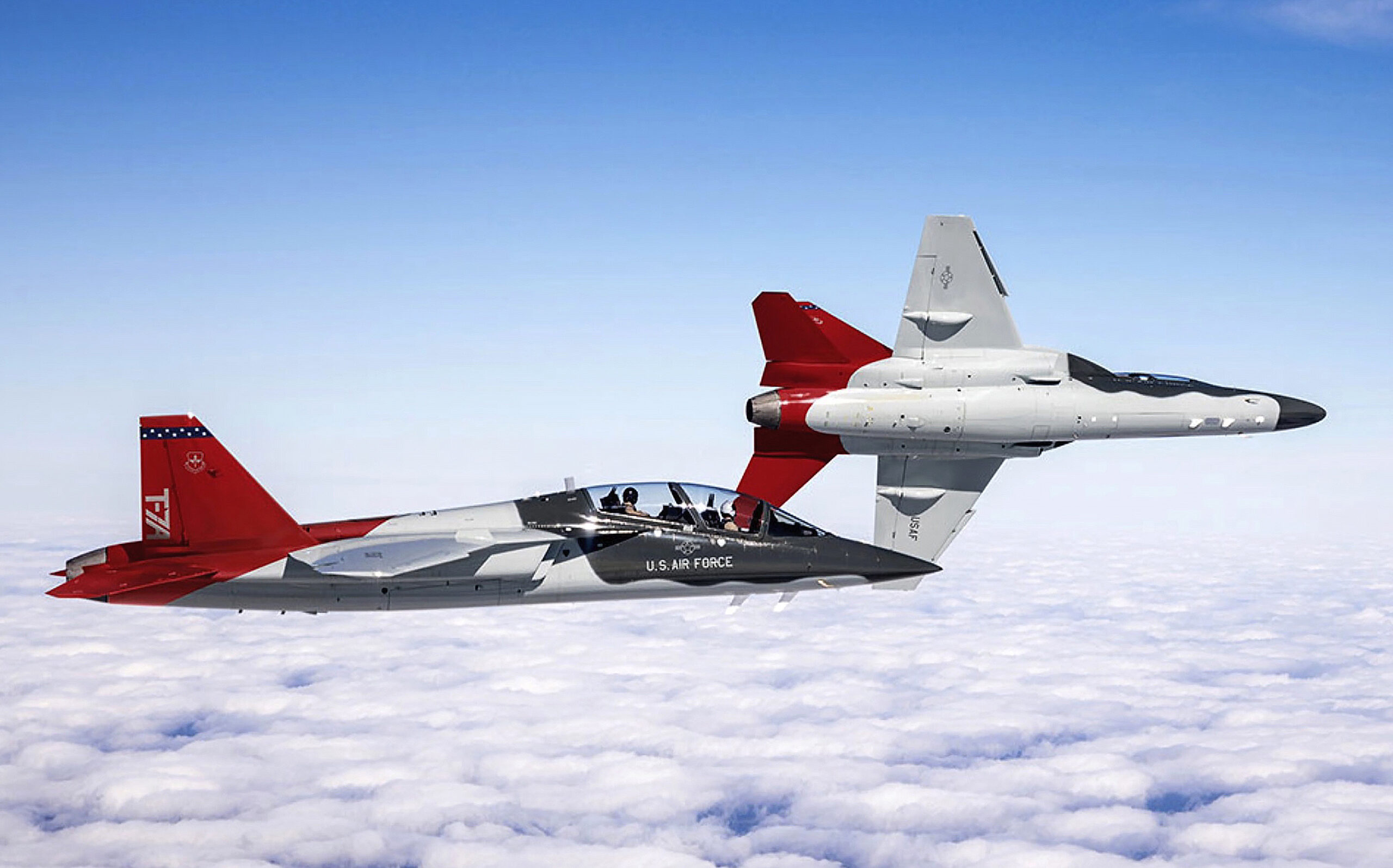
Roper said that the T-7 acquisition plan was approved long before his time but it doesn’t surprise him that “the first time you’re trying to do this for an airplane that you don’t get it perfectly right.”
“If we were to redo it, I think we would experiment with getting to production in a different way.”
He added that we’d have to ask the program managers and Boeing if they’ve been executing to plan.
“The T-7A Red Hawk remains the pathfinder for digitally designed, built and tested aircraft,” the company said. “As with any new development program, challenges occur but our commitment to fielding this advanced trainer for future fighter and bomber pilots remains unwavering.”
The Government Accountability Office is preparing an updated report on T-7A that should publish this month. Let’s hope there are no further delays looming for T-7A. If there are, they could jeopardize training for the 5th and 6th generation pilots the Air Force says are crucial to its modernization.
Contact the editor: tyler@thedrive.com
